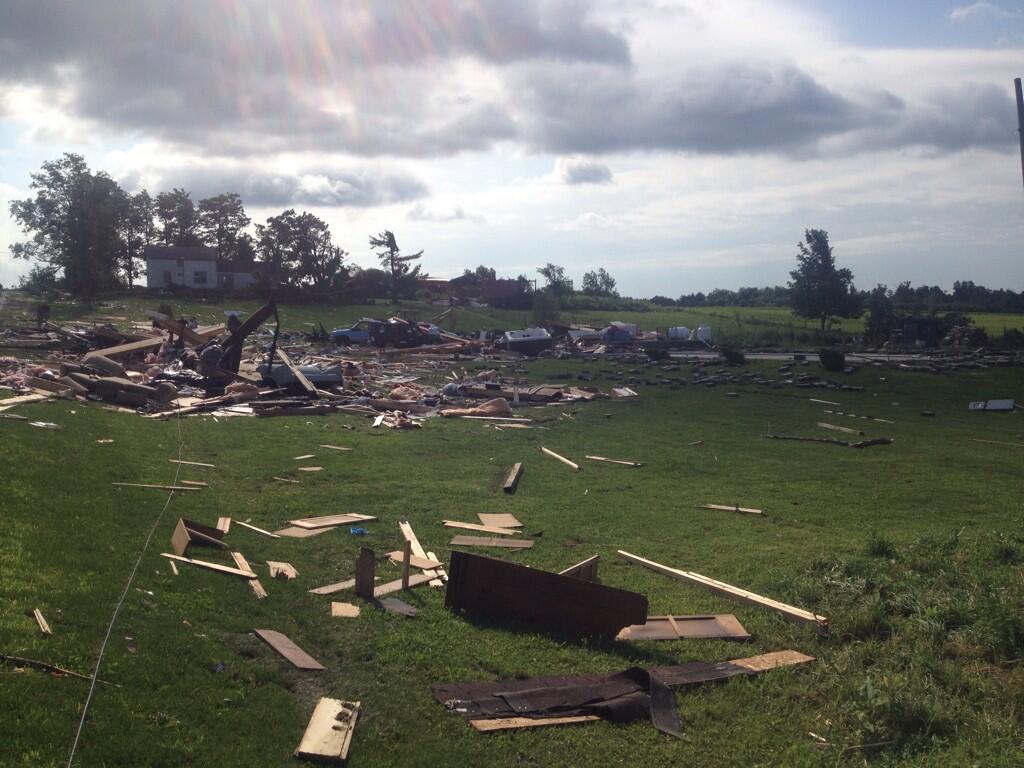https://twitter.com/matthewshaynes/status/765361410725609473
The tweet above from Valparaiso University meteorology student and Fort Wayne resident Matthew Hayes points out something a lot of Allen County, Indiana residents probably don’t know. The county’s outdoor warning siren system is all-or-nothing. That means that when a tornado warning covers any part of the county, sirens sound throughout the county, which encompasses 660 square miles (making it the largest county by area in the state).
That’s what happened at about 9:06 p.m. last night, when the northern Indiana office of the National Weather Service issued a tornado warning that included a small part of southwestern Allen County. A very small part:


The Fort Wayne-Allen County Consolidated Communications Partnership center dutifully followed protocol and activated Allen County’s outdoor warning siren system. People throughout the county who were close enough to a siren would have heard it sound. Presumably, this included people 26 miles away in Harlan, where the storm wasn’t forecast to travel. See a map of all Allen County’s sirens. Remember, sirens are designed for outdoor alerting only, but people can sometimes hear them from inside their homes, if their homes are close enough to a siren.
Ironically, if anyone was in the small part of Allen County that the warning covered, it is unlikely they heard a siren. The nearest operating outdoor warning siren is at least four miles away, at the headquarters of the Southwest Allen County Fire Department on Indianapolis Road.

So, last night’s tornado warning demonstrated two weaknesses of outdoor warning sirens as primary means of learning of such warnings:
- Outdoor warning sirens cannot be heard in many parts of Allen County, even by people who are outdoors.
- Sirens are often activated where warnings are not in effect.
What should you do? For geographic precision, your best bet is a good smartphone app, like Storm Shield or Weather Radio. These apps use your phone’s GPS to determine whether it is within the actual warning area. The next best thing is the Wireless Emergency Alerts that are built into modern smartphones. As I explained in another blog post, the geographic precision of such alerts is imperfect, but it’s better than countywide, doesn’t require installing an app, and it’s “on” by default on modern smartphones.
When you’re home, weather alert radios provide very reliable alerts but have the disadvantage of alerting an entire county for any warning that includes any part of that county. At least weather radio alerts — unlike outdoor warning sirens — come with voice messages the explain what part of the county is affected.
The bottom line, as I’ve written before, is don’t rely on tornado sirens. Not hearing one does not mean you don’t need to take cover, because you might be in a place where it’s impossible to hear a siren. Hearing one does not necessarily mean you need to take cover, because your neighborhood siren might sound for a warning that doesn’t affect you. Find a better way to know if you are in danger!
Side note: Based on what I know about how the National Weather Service generates warnings, I highly suspect that the meteorologist who issued last night’s warning probably intended to keep the warning polygon out of Allen County entirely, but accidentally overshot the county line when drawing the warning polygon.

 That’s my favorite line from a
That’s my favorite line from a 




 By the way, if you have a new enough smartphone, it probably supports
By the way, if you have a new enough smartphone, it probably supports